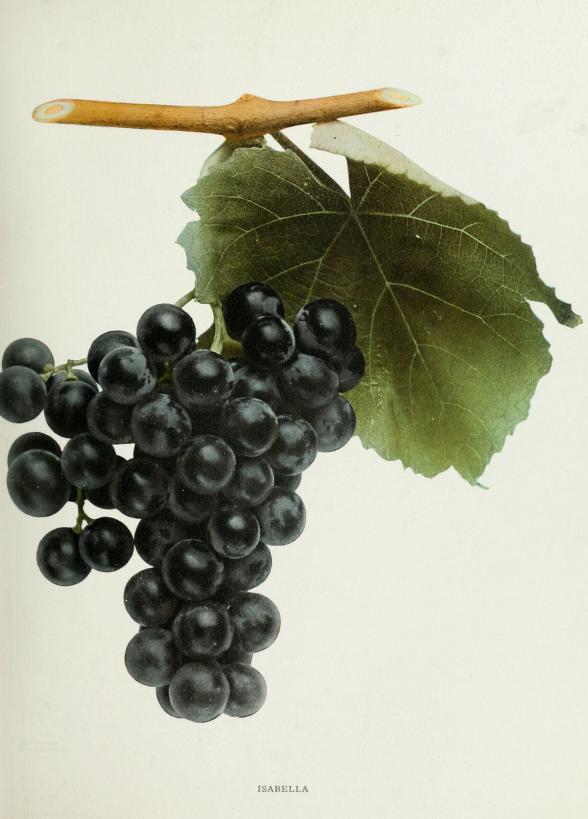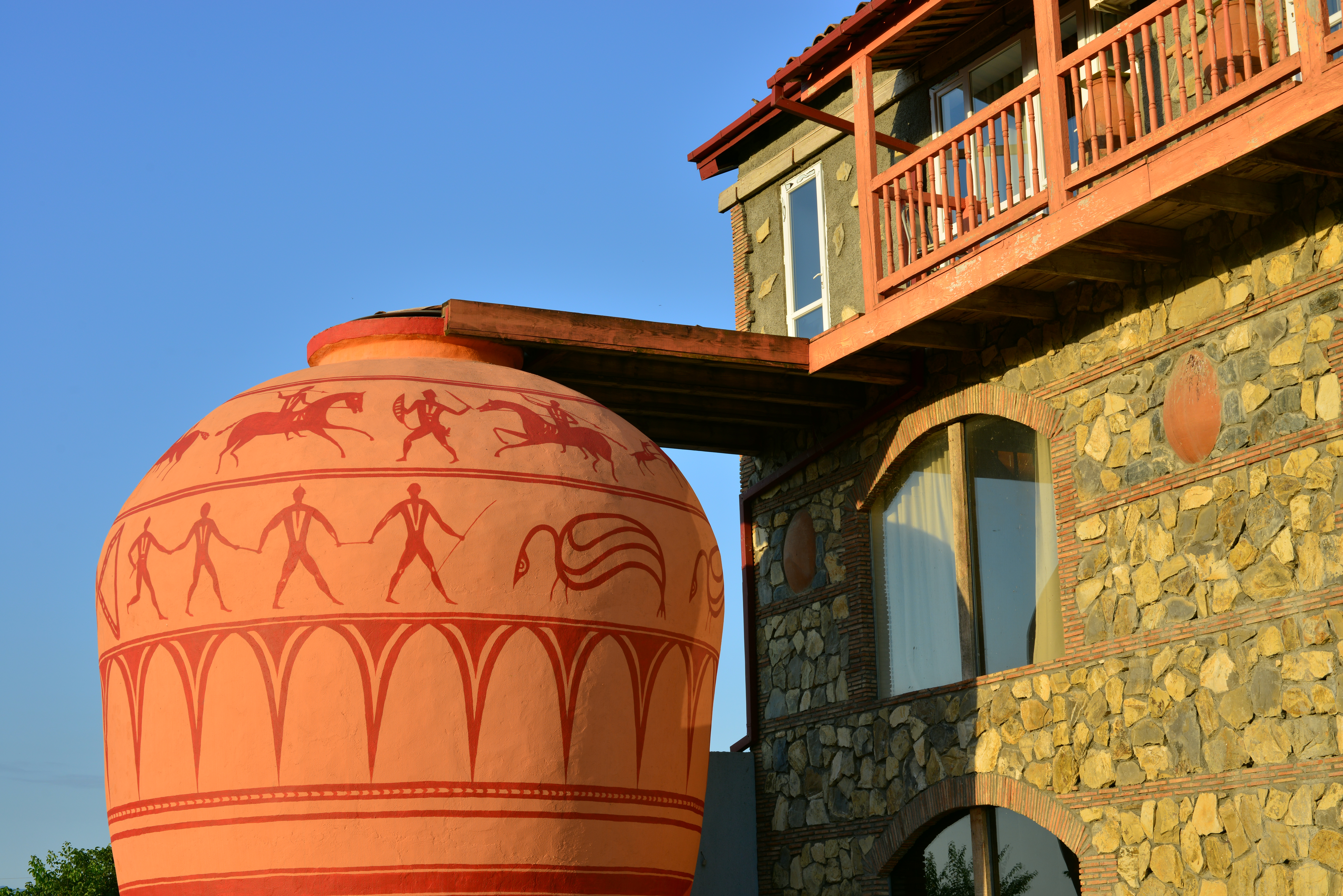|
Tsolikouri
Tsolikouri ( ka, ცოლიკოური) is a light yellow-skinned white grape variety grown mainly in western Imereti district of Georgia. It cultivated in Kolkhida Lowland at an altitude of above sea level. Out of 400 different types of grapes in the country, Tsolikouri is among the most widespread varieties. Nearly 90% of vineyards in western Georgia grow Tsolikauri. This sort usually matures by mid October. Grown in Orzhonikidze vineyards during Soviet rule of Georgia, Tsolikouri was considered one of high-quality grapes along with Chkhaveri and Izabella varieties. It has been used for production of premium dry, semi-sweet and semi-dry wines. Tsolikauri, Kolkheti, Lelo, Tvishi wines are made from Tsolikouri grapes. According to former Soviet statesman Vyacheslav Molotov, Tsolikouri was one of favorite wines of Soviet leader, Joseph Stalin. See also *Georgian wine Georgia is the oldest wine producing region in the world. The fertile valleys and protective slopes of ... [...More Info...] [...Related Items...] OR: [Wikipedia] [Google] [Baidu] |
Tvishi (wine)
Tvishi ( ka, ტვიში, tr) is an appellation for wines produced in a zone around Tvishi village in northwestern Georgia. The zone is on the right bank of the Rioni River and includes Alpana village. Tvishi is a dry to semi-sweet, still white wine made from Tsolikouri grapes. See also *Georgian wine *Sweetness of wine *List of Georgian wine appellations The following is a list of Georgian wine appellations. 20 appellations are registered with Sakpatenti, Georgia's national intellectual property center. 18 are described in a book published in 2010, and the 19th and 20th were announced in 2018 and ... References Georgian wine Georgian products with protected designation of origin {{Georgia-cuisine-stub ... [...More Info...] [...Related Items...] OR: [Wikipedia] [Google] [Baidu] |
Imereti
Imereti (Georgian: იმერეთი) is a region of Georgia situated in the central-western part of the republic along the middle and upper reaches of the Rioni River. Imereti is the most populous region in Georgia. It consists of 11 municipalities and the city of Kutaisi, which is the capital of the region. Subdivisions The Imereti region has one self governing city ( Kutaisi) and 11 municipalities with 163 administrative communities (temi), totalling to 549 populated settlements: * Eleven cities: Baghdati, Chiatura, Khoni, Kutaisi, Sachkhere, Samtredia, Terjola, Tqibuli, Tsqaltubo, Vani and Zestafoni; * Three dabas: Kharagauli, Kulashi and Shorapani (; * Villages: 535 Economy Aside from the capital Kutaisi, significant towns and regional centres include Samtredia, Chiatura (manganese production centre), Tkibuli (coal mining centre), Zestafoni (known for metals production), Vani, Khoni, and Sachkhere. Traditionally, Imereti is an agricultural region, known for its mu ... [...More Info...] [...Related Items...] OR: [Wikipedia] [Google] [Baidu] |
Georgia (country)
Georgia (, ; ) is a transcontinental country at the intersection of Eastern Europe and Western Asia. It is part of the Caucasus region, bounded by the Black Sea to the west, by Russia to the north and northeast, by Turkey to the southwest, by Armenia to the south, and by Azerbaijan to the southeast. The country covers an area of , and has a population of 3.7 million people. Tbilisi is its capital as well as its largest city, home to roughly a third of the Georgian population. During the classical era, several independent kingdoms became established in what is now Georgia, such as Colchis and Iberia. In the early 4th century, ethnic Georgians officially adopted Christianity, which contributed to the spiritual and political unification of the early Georgian states. In the Middle Ages, the unified Kingdom of Georgia emerged and reached its Golden Age during the reign of King David IV and Queen Tamar in the 12th and early 13th centuries. Thereafter, the kingdom decl ... [...More Info...] [...Related Items...] OR: [Wikipedia] [Google] [Baidu] |
Grape Variety
This list of grape varieties includes cultivated grapes, whether used for wine, or eating as a table grape, fresh or dried (raisin, currant, sultana). For a complete list of all grape species including those unimportant to agriculture, see Vitis. The term ''grape variety'' refers to cultivars rather than actual botanical varieties according to the International Code of Nomenclature for Cultivated Plants, because they are propagated by cuttings and may have unstable reproductive properties. However, the term ''variety'' has become so entrenched in viticulture that any change to using the term ''cultivar'' instead is unlikely. Single species grapes While some of the grapes in this list are hybrids, they are hybridized within a single species. For those grapes hybridized across species, known as interspecific hybrids, see the section on multispecies hybrid grapes below. ''Vitis vinifera'' (wine) Red grapes White grapes Rose Grapes ''Vitis vinifera'' (table) ... [...More Info...] [...Related Items...] OR: [Wikipedia] [Google] [Baidu] |
Kolkhida Lowland
In Greco-Roman geography, Colchis (; ) was an exonym for the Georgian polity of Egrisi ( ka, ეგრისი) located on the coast of the Black Sea, centered in present-day western Georgia. Its population, the Colchians are generally thought to have been an early Kartvelian-speaking tribe ancestral to the contemporary western Georgians, namely Svans and Zans. According to David Marshall Lang: "one of the most important elements in the modern Georgian nation, the Colchians were probably established in the Caucasus by the Middle Bronze Age."''The Cambridge Ancient History'', John Anthony Crook, Elizabeth Rawson, p. 255 It has been described in modern scholarship as "the earliest Georgian formation", which, along with the Kingdom of Iberia, would later contribute significantly to the development of the Kingdom of Georgia and the Georgian nation.Cyril Toumanoff, ''Studies in Christian Caucasian History'', pp. 69, 84Christopher Haas, ''Early Christianity in Contexts, An Explora ... [...More Info...] [...Related Items...] OR: [Wikipedia] [Google] [Baidu] |
Vineyard
A vineyard (; also ) is a plantation of grape-bearing vines, grown mainly for winemaking, but also raisins, table grapes and non-alcoholic grape juice. The science, practice and study of vineyard production is known as viticulture. Vineyards are often characterised by their ''terroir'', a French term loosely translating as "a sense of place" that refers to the specific geographical and geological characteristics of grapevine plantations, which may be imparted to the wine itself. History The earliest evidence of wine production dates from between 6000 and 5000 BC. Wine making technology improved considerably with the ancient Greeks but it wasn't until the end of the Roman Empire that cultivation techniques as we know them were common throughout Europe. In medieval Europe the Church was a staunch supporter of wine, which was necessary for the celebration of the Mass. During the lengthy instability of the Middle Ages, the monasteries maintained and developed viticultural prac ... [...More Info...] [...Related Items...] OR: [Wikipedia] [Google] [Baidu] |
Izabella (grape)
The Isabella grape is a cultivar derived from the grape species ''Vitis labrusca'' or 'fox grape,' which is used for table, juice and wine production.winepros.com.au. appellationamerica.coIsabella/ref> Appearance and use The skin of Isabella when ripened is a dark purple, almost black with a tender green-yellow flesh. It has large well formed fruit clusters with thick bloom. It is a slip skin variety, meaning that the skin separates easily from the fruit. The grapes are used to make wine, most notably Uhudler and Fragolino. The Isabella, ''Vitis x labruscana'', being of hybrid parentage, imparts a " foxiness" to the wine and because of this is thought to be objectionable, therefore it is not seen as a grape capable of making fine wines. For the table the flavour is good though with the astringent tough skin and "foxy" aroma is objectionable for some tastes.winemaking.jackkeller.neWinemaking Questions, Page 2: Isabella Grapes/ref> History Isabella, although popularly classifi ... [...More Info...] [...Related Items...] OR: [Wikipedia] [Google] [Baidu] |
Vyacheslav Molotov
Vyacheslav Mikhaylovich Molotov. ; (;. 9 March Old_Style_and_New_Style_dates">O._S._25_February.html" ;"title="Old_Style_and_New_Style_dates.html" ;"title="nowiki/>Old Style and New Style dates">O. S. 25 February">Old_Style_and_New_Style_dates.html" ;"title="nowiki/>Old Style and New Style dates">O. S. 25 February1890 – 8 November 1986) was a Russian politician and diplomat, an Old Bolshevik, and a leading figure in the Soviet government from the 1920s onward. He served as Chairman of the Council of People's Commissars from 1930 to 1941 and as Ministry of Foreign Affairs (Soviet Union), Minister of Foreign Affairs from 1939 to 1949 and from 1953 to 1956. During the 1930s, he ranked second in the Soviet leadership, after Joseph Stalin, whom he supported loyally for over 30 years, and whose reputation he continued to defend after Stalin's death, having himself been deeply implicated in the worst atrocities of the Stalin years – the forced collectivisation of agriculture in ... [...More Info...] [...Related Items...] OR: [Wikipedia] [Google] [Baidu] |
Soviet Union
The Soviet Union,. officially the Union of Soviet Socialist Republics. (USSR),. was a transcontinental country that spanned much of Eurasia from 1922 to 1991. A flagship communist state, it was nominally a federal union of fifteen national republics; in practice, both its government and its economy were highly centralized until its final years. It was a one-party state governed by the Communist Party of the Soviet Union, with the city of Moscow serving as its capital as well as that of its largest and most populous republic: the Russian SFSR. Other major cities included Leningrad (Russian SFSR), Kiev (Ukrainian SSR), Minsk ( Byelorussian SSR), Tashkent (Uzbek SSR), Alma-Ata (Kazakh SSR), and Novosibirsk (Russian SFSR). It was the largest country in the world, covering over and spanning eleven time zones. The country's roots lay in the October Revolution of 1917, when the Bolsheviks, under the leadership of Vladimir Lenin, overthrew the Russian Provisional Government ... [...More Info...] [...Related Items...] OR: [Wikipedia] [Google] [Baidu] |
Joseph Stalin
Joseph Vissarionovich Stalin (born Ioseb Besarionis dze Jughashvili; – 5 March 1953) was a Georgian revolutionary and Soviet political leader who led the Soviet Union from 1924 until his death in 1953. He held power as General Secretary of the Communist Party of the Soviet Union (1922–1952) and Chairman of the Council of Ministers of the Soviet Union (1941–1953). Initially governing the country as part of a collective leadership, he consolidated power to become a dictator by the 1930s. Ideologically adhering to the Leninist interpretation of Marxism, he formalised these ideas as Marxism–Leninism, while his own policies are called Stalinism. Born to a poor family in Gori in the Russian Empire (now Georgia), Stalin attended the Tbilisi Spiritual Seminary before joining the Marxist Russian Social Democratic Labour Party. He edited the party's newspaper, ''Pravda'', and raised funds for Vladimir Lenin's Bolshevik faction via robberies, kidnappings and protection ... [...More Info...] [...Related Items...] OR: [Wikipedia] [Google] [Baidu] |
Georgian Wine
Georgia is the oldest wine producing region in the world. The fertile valleys and protective slopes of the South Caucasus were home to grapevine cultivation and neolithic wine production ( ka, ღვინო, ''ɣvino'') for at least 8000 years. Due to millennia of winemaking and the prominent economic role it retains in Georgia to the present day, wine and viticulture are entwined with Georgia's national identity. Among the best-known Georgian wine regions are Kakheti (further divided into the micro-regions of Telavi and Kvareli), Kartli, Imereti, Racha-Lechkhumi and Kvemo Svaneti, Adjara and Abkhazia. In 2013, UNESCO added the ancient traditional Georgian winemaking method using the Kvevri clay jars to the UNESCO Intangible Cultural Heritage Lists. History The roots of Georgian viticulture have been traced back by archeology to when people of the South Caucasus discovered that wild grape juice turned into wine when it was left buried through the winter in a shallow pit. T ... [...More Info...] [...Related Items...] OR: [Wikipedia] [Google] [Baidu] |




